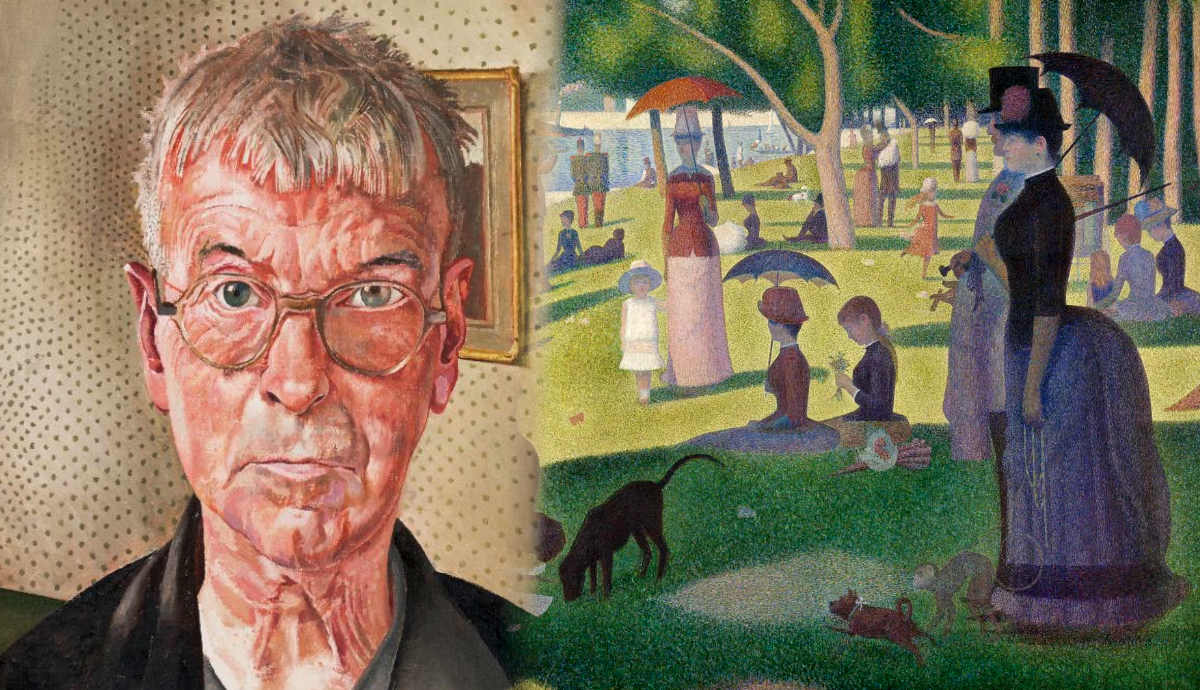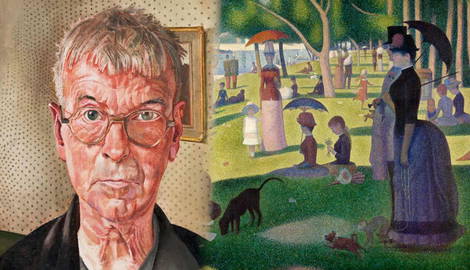
Modern realism and post-impressionism both spawned from earlier art movements: realism and impressionism. Household names like Picasso and Van Gogh are part of these respective movements but what are they and how do they relate?
Here, we’re talking about modern realism and post-impressionism to give you a deeper look into how they’re alike and what sets them apart.
What Is Modern Realism?

In modern art, there tends to be a focus on the abstraction of the world that distinctly separates it from the realism of the 19th century. Still, some incredible artists used realism in a modern way, using “real” subjects to depict the way they “really” looked.
Modern realism refers to a painting or sculpture that continues to represent subjects realistically after the advent of abstract modern styles.

There are various subsets of modern realism including the return to order, a style that surged in the 1920s after World War I. From there came Neue Sachlichkeit (New Objectivity) and magic realism in Germany, traditionalism in France, and regionalism in the United States. It seems that people were yearning for their roots after being shaken up from the war.

Even artists like Pablo Picasso and Georges Braque, who invented cubism, are considered to be part of the return to order art movement under the umbrella of modern realism.

The key to the modern realism movement, employed by artists like Sir Stanley Spencer and Christian Schad, was to use edgier subject matter while emanating 19th-century techniques.
What Is Post-Impressionism?

Post-impressionism is unique because it most often describes a group of four major painters, as opposed to a more arbitrary stylistic phase. Each of these artists expanded and developed impressionism, taking the movement on very different paths toward what is now called post-impressionism – Paul Cezanne, Paul Gaugin, Georges Seurat, and Vincent van Gogh.
These four artists put a signature twist on traditional ideals of impressionism which are: realistically painting from nature, using short brushstrokes, and conveying shadows as colorful reflections instead of black and brown absences of light.
Cezanne continued painting in nature, but with added vigor and intensity.
On the other hand, Gaugin didn’t paint from nature and instead chose imaginative subjects while using impressionist light and color structure.

Seurat used light and color in a more scientifically by using complementary pigments and attempting to understand the physics of light for more realistic paintings.

Van Gogh painted nature but his pieces were much more personal than those of early impressionists. The artistic choices he made were projections of his inner emotions onto the world around him versus a depiction of things as they were.
How Are They Alike?

So, how are modern realism and post-impressionism alike? In short, the movements are both very much influenced by the art of the centuries before them. If you were to compare it to a book, they’re both like chapter two, if you will, of different stories in the same genre of storytelling.
If realism is chapter one, then modern realism is chapter two. Likewise, if impressionism is chapter one, post-impressionism is chapter two. As time passed, both of these movements were a way for artists to refer to the past while taking it on a brand-new course.
Again, it’s chapter two in the story. The second wave of two movements which, in and of themselves, are quite similar.
Both modern realism and post-impressionism still aim to represent the world in a true-to-life way. The methods in which they did so, however, are different.
What Makes Them Different?
Modern realism as we know it today came about after post-impressionism. You won’t see overlapping artists between these movements.
Modern realism was less focused on the natural world. Perhaps because people’s lives were becoming less and less rural as things moved into the 20th century. So, spending time with your easel in the great outdoors was becoming less common.
We can also conclude that modern realism was the result of a yearning for the past while post-impressionism was more of an extension of impressionism itself. Realism was taken over by abstract art by the time modern realism made its way onto the scene but impressionism was barely over before post-impressionists made their way to exhibitions.
Long story short, the gap between the chapters of realism and modern realism was a bit larger than that of the gap between impressionism and post-impressionism.
Modern realism is also a lot broader than post-impressionism. As an umbrella movement, modern realism has many subsets while post-impressionism was shaped largely by Gaugin, Van Gogh, Seurat, and Cezanne. Sure, other artists fall under post-impressionism but its scope as a movement is much more contained.
Why Do They Matter?

Well, why do any of the art movements matter? Because they tell us stories about the people involved and about the histories they lived within.
Modern realism was a reaction to World War I which created a strong urge to get back to “reality.” Post-impressionism expanded on the novel ideas introduced by the impressionists and played further on the concepts of color, light, and whether or not we see things as they are in the first place.
Attempting to understand and convey reality is something we as humans are always trying to do. Modern realism and post-impressionism are interesting movements as we witness some incredible artists in their attempts to do just that.







